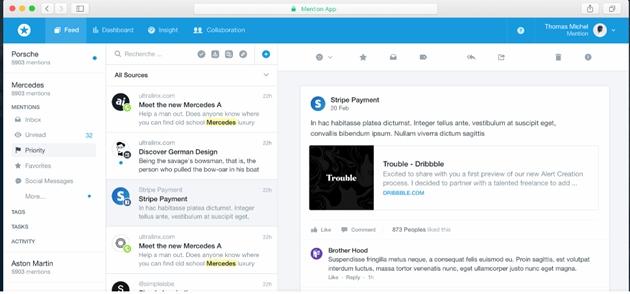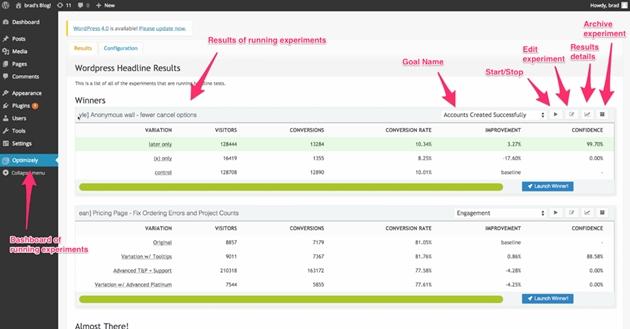Generating qualified B2B leads is a challenge, to say the least. It can be much more difficult than capturing B2C leads, as some niches are notoriously tough to penetrate, some prospects are tough taskmasters, and some buying cycles are painfully long.
And it takes significantly more than just running ads to reel in and validate your B2B leads. The process is rigorous and involves carefully thought-out components working in unison. B2B leads also typically require more nurturing in the middle of the sales funnel.
However, getting the process started requires strong tactics to qualify the most valuable prospects. This is much easier said than done, and it's easy to make mistakes along the way. Here are five inexcusable ones that you can, and should, avoid.
1. Not Keeping Tabs on Website Visitors
One of the most efficient ways to generate leads is collecting information on the people who visit your website. The ability to see what both known and unknown visitors are doing on your platform gives you a huge upper hand in learning what they are interested in and how to target them effectively.
Visitor tracking usually has a narrow focus on individuals' behavior while they browse your website. But with the help of Web analytics tools, you can see where they come from, what elements of your site they're engaging with, and how frequently or recently they've interacted with you.
Some 98% of your website visitors will never contact you. But that does not mean they are not interested in your products. By using features such as Behavior Flow and Funnel Visualization in Google Analytics, you can get an in-depth look at how your Web content is faring with visitors. You can determine which leads would be the most beneficial to chase, as well as gain insights on optimizing your sales process.
2. Omitting Lead-Nurturing Emails
As noted earlier, B2B leads require a greater and more intense focus on lead nurturing. There are all kinds of lead generation tools that work in varying stages of your sales cycle, from lead generation to managing customer relationships. They can help you a great deal in connecting with your leads and keeping them engaged across marketing channels, through months of nurturing.
Whatever your favorite tech stack and methods for lead nurturing, the channel that works best for this purpose is email: According to Econsultancy's Email Marketing Industry Census, 73% of marketers say email drives good or excellent ROI; that's more than for any other channel.
Accordingly, not having an email marketing strategy in place is one the biggest sins you can commit; it is most likely costing you a great deal of leads as well as revenue. When a visitor opts in to your list, they have already shown interest in your product or service; in other words, they want to hear what you have to say.
Once you have clear goals in mind for a campaign, you will need to segment your subscriber lists based on the where and how prospects match up to your sales funnel. Your favorite email marketing app may even have list segmenting as a default feature; more robust automation platforms (such as SharpSpring) make it easy to create dynamic segments based on rule settings.
From here, you can automate responses to communicate with subscribers at the most optimal times. For example, you can have an autoresponder in place that reaches out to new subscribers to your newsletter within minutes, breaks the ice, and starts new avenues of conversation.
Ultimately, B2B customers need to keep reading your emails. Incorporating a strategy for sustained two-way communication into your marketing plan is vital to maintaining and nurturing valuable leads.
3. Overlooking the Spontaneity of Social Media
There's no denying that both B2B and B2C marketing landscapes are more and more dominated by social media. If used correctly, social media is a phenomenal avenue to showcase your expertise while conveying and expanding a unique brand persona
An IDC report found that 75% of B2B buyers incorporate social media into their purchasing decisions. That's a lot of potentially missed opportunities if you fail to access the power of the social networks that your audience frequents.
Depending on your industry, you don't necessarily have to include every network in your marketing mix. Start by identifying which ones have an environment most relevant to your business. In general, LinkedIn, Facebook (with interest targeting and Custom/Lookalike Audiences) and Twitter (with interest targeting and Tailored Audiences) typically work well for B2B marketing.
At first glance, posting content on social media may seem like an easy task. However, posting the right stuff at the right time will take a bit of research. Be sure you are using social monitoring tools (such as Mention) to get an idea of what the most discussed topics and concerns are in your industry.
The more keywords or brands related to your operations you track, the easier it becomes to craft your posts to play to consumer interests with more certainty.
4. Focusing Too Narrowly With Your Content
Marketing common sense says that personalization is central to pleasing prospects and making sales. However, in the B2B universe, there is a fine line as to what is "too much" personalization.
In B2C, you are almost always aiming to convince only one person to buy. In B2B, however, on average 5.4 people are involved in signing off on purchase decisions. In this situation, varying priorities come into play. By creating content aimed at a specific or single topic, you might end up ignoring the objectives of most of the decision makers. When you're at the drawing board, you need to devise a content strategy that does away with interdepartmental differences and creates a consensus among the buyers.
For starters, try to find common ground among all potential decision-makers, and choose content topics accordingly. You'll need to create content that addresses concerns while touting advantages for all parties. Just be prepared to have communication channels such as live chat or email ready to answer further questions about your product.
5. Not Testing and Adjusting
In today's digital landscape, just about every facet of your marketing strategy needs to be tested if you are to cater to rapidly evolving consumer expectations and beat increasingly nimble competitors. Failure to test the factors that influence your strategy amounts to bringing the growth and development of your entire sales cycle to a grinding halt.
A/B testing is a relatively easy concept to grasp. Basically, it involves running two versions of a certain element to determine which one yields better results. You could test different email subject lines, CTA button colors, and various landing page components to find which combinations end up bringing in more leads.
Various tools (such as Optimizely) allow a multitude of experimentation options and provide in-depth analytics on the performance of different variations of your pages.
Nudging your leads through the conversion funnel involves using the information you gain from testing to determine your next move. As any digital marketers can tell, there are very few guarantees in this field. Analyzing any and all data you can collect is your best approach to learning what your leads and prospects are looking for.
* * *
At the end of the day, lead generation is B2B marketing's primary task. It is also the trickiest. Getting disconnected from what customers want happens a lot more and faster than you think. Although we all make mistakes along the way, the idea is to minimize them by staying proactive and tweaking your content and targeting with insights from your analytics.







